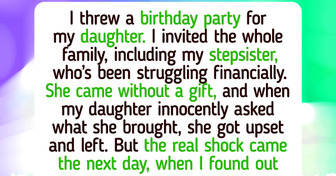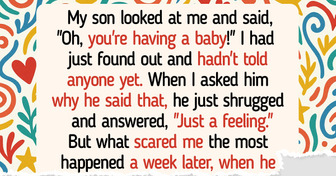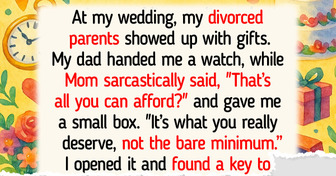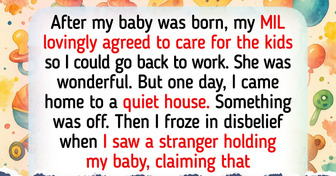"Kendall Is That You?" Kris Jenner, 69, Stuns Fans With Her New Look

We often think that people in the past also wanted their shoes to be comfortable. However, it wasn’t exactly like this. Shoes reflected social status, cultural traditions and even age. Therefore, they were often not comfortable but unusual, sometimes looking like the product of someone’s crazy imagination.
The article contains images created using artificial intelligence.
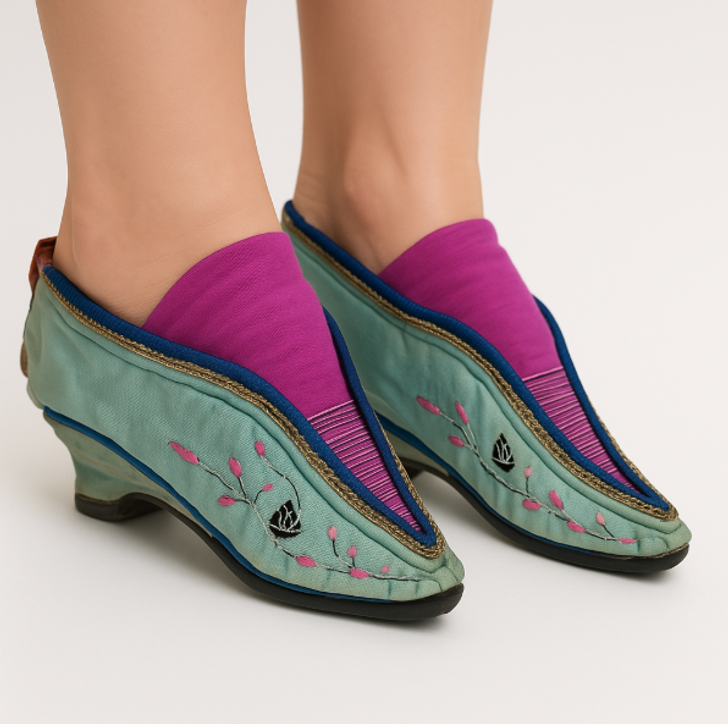
In China, there was a thousand-year-old tradition of bandaging women’s feet and putting small shoes on them to make their feet appear smaller. And they were so small that they could easily fit in the palm of your hand. The process of foot deformation, often imposed on girls from an early age, lasted for years and was accompanied by severe pain. The damage was irreversible and severely limited women’s mobility for life.
As a dowry, a woman would make several pairs of shoes, thus demonstrating her skill in embroidery and the small size of her feet. After the wedding, the bride gave a pair of shoes to each of her main female relatives in a special ceremony. It was called the “sharing of shoes.”
These peculiar clogs originated in France, in the Ariège region. The village men created them for their future brides. It was believed that the higher the toe of the clog, the more the man loved his bride.
Paduka shoes are very similar to our modern flip-flops. But in India, these shoes have a higher status. From Sanskrit, the name translates to “small foot.” Their design varied according to the status of the person who wore them. Simple wooden paduka shoes were worn by ordinary people, while more elaborate or skillful versions were used at weddings, could be found in the bride’s dowry or with people of high rank.
But the paduka had another purpose. It was intended to ensure the practice of ahimsa (non-violence), minimizing harm to all living things, including plants and insects underfoot.
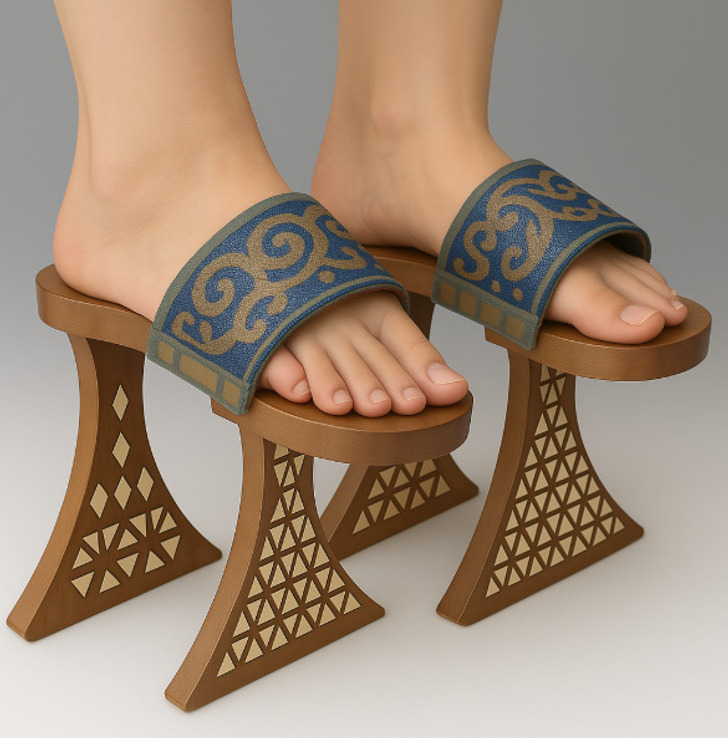
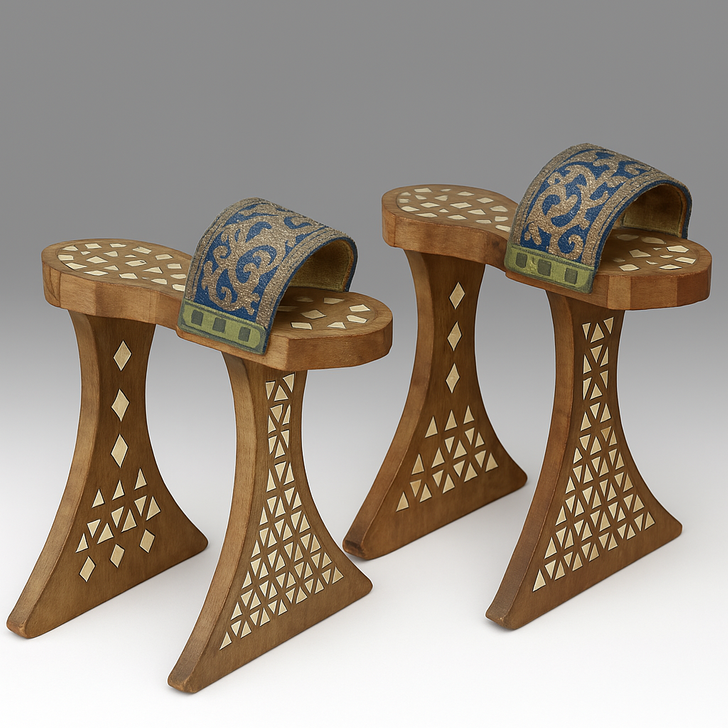
The name of these shoes comes from the sound it makes when walking on a marble floor. Kabkabs once served as a practical way to protect Middle Eastern women from dirt on wet, muddy streets and in hot, humid baths. Shoes belonging to wealthy women were often richly inlaid with mother-of-pearl. The upper side was decorated with silver, gold or pewter wire embroidery.
For special occasions, such as a wedding, wooden kabkabs were completely covered with intricate silver trim or fine jewelry. Often the brides were very young girls who were not tall enough. To compensate this, wedding kabkabs were sometimes made as high as 2 feet.
These shoes were usually worn by maiko, apprentice geishas. Their training began at the age of 10. The height of the platform could be 3.9–5.9 inches. Often a bell was attached to the shoe: since the girls were still very young, they could get lost. The ringing helped others to realize that there was a maiko nearby. Over time, this sound became a symbol of innocence and youth.
The color of the okobo also had significance. Young maikos wore shoes with red trim, and those who were about to finish their training had yellow trim.
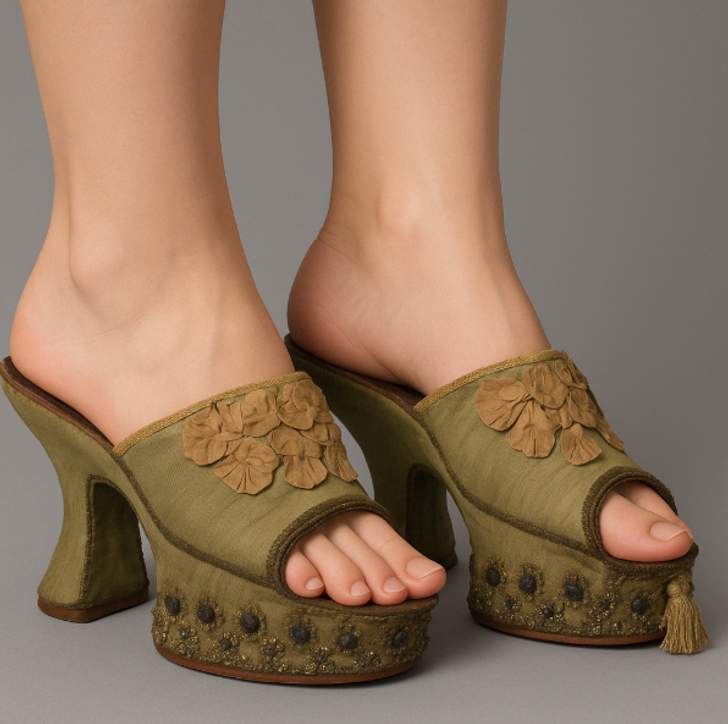
Chopines were popular in Europe in the 15th century. The height of their platforms could reach 20 inches. Initially, this unusual footwear was worn by frivolous women or courtesans, but over time, chopines began to attract the attention of women from high society. Despite the fact that wearing them caused a mixed reaction in society, it didn’t stop the noble ladies.
There was even a law that limited the height of chopines. Those who violated it had to pay a fine. In addition to emphasizing a high social status, chopines visually lengthened the legs and gave a woman’s silhouette a majestic look. However, due to the fact that the shoes were very tall, it was very difficult to walk in them, and noble ladies were often assisted by their maids.
Are you fond of shoes? Then here are shoes from movies that became iconic. Check them out.



